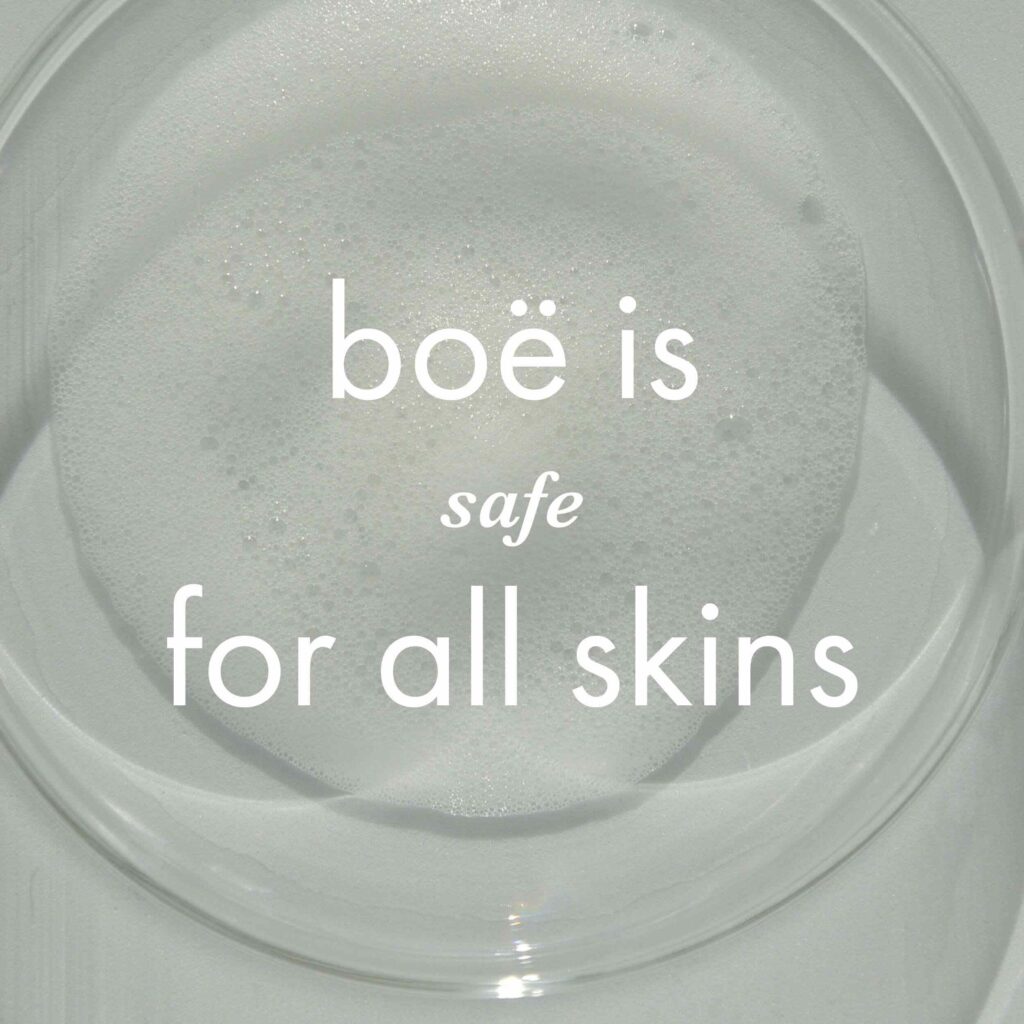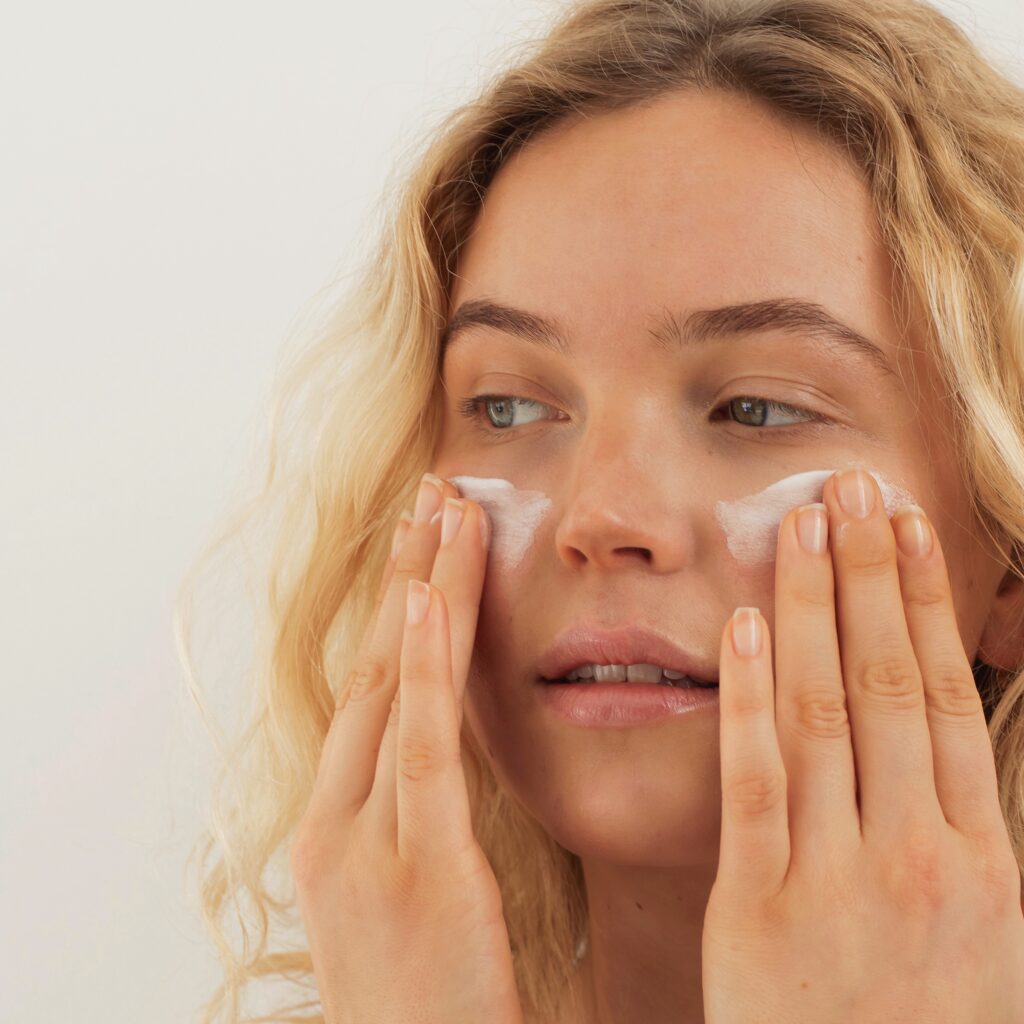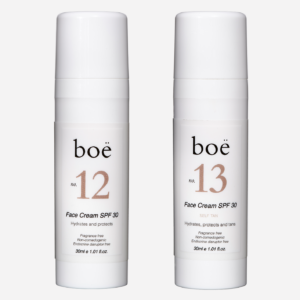We probably don’t give our skin enough credit for all of the work it’s doing on its own. Everything it does for us throughout the day, fighting off a lot of what we put it through, by itself. It keeps out harmful toxins, pushes dead skin cells upwards so we remove it the next time we touch our skin. It also moisturizes itself, and tries to protect our skin’s moisture barrier.
So how does all of this work, and how can we help our skin to thrive under even better conditions? We’ll tell you below :)
What is the skin’s natural moisture barrier?
Basically, the natural moisture barrier is the outermost layer of our skin. It consists of a layer of skin cells and lipids that are very tight. Think of this layer as a brick-and-mortar wall. It’s structure helps your skin to do its favourite thing and what it does best: to keep the gooey insides together and the toxic things out. Previously, the skin was seen as a kind of ‘well-fitted tarp’, which just was ‘there’, not really doing anything. But scientists has over the last decades examined the skin, and found that all the different layers in the skin are moving and working every second.
Overall, the lipids in the natural moisture barrier are made of approximately 15% fatty acids, 50% ceramides, and 35% cholesterol. The fatty acids are the main reason to why your skin looks and feels the way it does. They are flexible, a bit permeable, and they are the main benefactor and reason why your skin seals off from everything it meets during the day.
What does the moisture barrier do?
Did you know that the majority of the skin cells that are visible, actually are dead skin cells? So the deeper you go into the layers of the skin, the ‘fresher’ cells you’re going to find. The deeper skin layers actually ‘push’ up the expired cells to the outer layer. The glue that holds these ‘expired’ cells together, is though very alive. The mix between ceramides, cholesterol and fatty acids are woven together and between cells. This forms a water-tight kind of seal, on the surface of your skin.
And it’s the strength of this seal, that’s keeping your skin looking and feeling healthy.
The natural moisture barrier and the transepidermal water loss
Just like plants and trees needs water to live; so do we. Unfortunately, water likes to evaporate, and lives its own life – outside of our bodies. When the evaporation happens through our skin, it’s called transepidermal water loss (TEWL).
The aforementioned natural moisture barrier is what keeps the moisture that our cells and organs need to stay hydrated, in lock. When our moisture barrier is damaged or compromised, the transepidermal water loss happens quicker. You can get everything from dry skin to acne, eczema, or wrinkles, as results of this.
Some transepidermal water loss is unavoidable… But if you deeply nourish the skin barrier, the defense can be revived and you’ll be able to see and feel significant differences in your skin’s texture, tone, and the overall appearance.
Our No.1 Tan Drops contain Glycerin, which protects against environmental sources of skin irritation, and strengthens the precious skin barriers – besides helping to contain and attract the moisture from around us, in our skin.
What happens when the moisture barrier is damaged, and how does it happen?
If you damage your moisture barrier, it is more prone to be penetrated. It means that less of the fatty acids that gives your skin the plump, hydrated and healthy look and feel, and more dull look and TEWL.
In some occasions and for some reasons, it makes sense that your moisture barrier is damaged – and where it’s out of your hands and control. For instance, some are born with a bit weaker barrier. Here can the sun, allergens, irritants, changing/dry climates, and/or using too cold or hot water, cause damage to your skin barrier. But you can also do something to give your skin barrier the best conditions to perform and thrive under.
Sometimes, when we want to do our best and add different ‘actives’, it can wound up damaging more than benefitting. With actives like retinol, AHA, retinoid, BHAs, etc., you have to be careful, as they can do more harm than good. to your skin’s moisture barrier. Sometimes, a strong skin barrier is made from using less (hard) products. The aforementioned, strong, powerful and effective actives, that many of us love, can be very hard on our moisture barrier. If they are used without getting the barrier secured first, their abilities – that we choose them fore – turns destructive and will disrupt the delicate balance in our skin.
We love routines, but we also love to keep them simple. Don’t stress your skin by having too much going on. And make sure to use products with ingredients that are good for your skin.
– Because they could be what there’s causing the problems.

How to strengthen the barrier
If you have or are experiencing either irritation, dryness, fine lines/wrinkles, or acne, you should probably give your skin some love and attention. And if you know how to treat it, and learns what your skin is needing, it’ll probably act accordingly.
We believe that there are three key ingredients that really can make your skin happy and healthy.
1. Lipids (ceramides, cholesterol, and fatty acids)
Ceramides, cholesterol, and fatty acids together makes up the ‘lipid blend’ of the moisture barrier. This blend is based on the majority being ceramides, and then cholesterol and fatty acids being roughly equally sharing the rest. We’d advice you to look for skincare that mimics the ratio of these three elements (3:1:1). You can replace lost lipids by applying ceramides, cholesterol, and fatty acids to your skin, while also being benefitted with a restored, smooth, and glowy look.
– A tip if you like glow from within: then you can safely add lipids to your diet, by ingesting omega-3, 6, and 9, through supplements or omega-rich foods.
2. Glycerin
Glycerin is a hygroscopic ingredient. This means it attracts the moisture from the air surrounding us, and helps us to contain it in our skin. Glycerin imitates the skin’s natural moisturizing factors in the skin’s fat layer. Thus it becomes crucial for the skin’s ability to tie water in the superior skin layer. The ingredient also protects against environmental sources of skin irritation, and strengthens the precious skin barriers. As glycerin used in products has a low molecular weight, it can sink deep into the skin, to the lower dermis layer. When it sinks into the skin, its qualities locks in the hydration, keeping TEWL at a minimum. At the same time it improves the youthful and healthy look and feel, and maintains the moisture balance.
– Aaaand, makes your skin feel soft, smooth, elastic, and more receptive to other skincare products and active ingredients.
3. Helianthus Annuus Seed Oil (sunflower oil)
It’s a light, vegan, and non-fragrant oil that’s rich in fatty acids and vitamin E. It’s also a non-comedogenic oil, meaning it won’t clog your pores, so you safely can apply it even if you have acne-prone skin or suffer from breakouts. It specifically goes in and repairs the compromised moisture barrier. Sunflower oil can be used by all skin types and has soothing, hydrating and strengthening effects, while it also contains anti-inflammatory properties. It’s specifically effectual in calming and soothing irritated skin, and treating both dryness and eczema.
Treat your barrier like it’s your best friend
What we hope to have made clear in this text, is that the skin’s natural moisture barrier, is with is for the long haul. It’s our ride or die. We have to learn to live with it, take care of it and what it needs, besides what it does and doesn’t like.
Treat it gently and with love, and it’ll help you to have a beautiful glowy skin.






